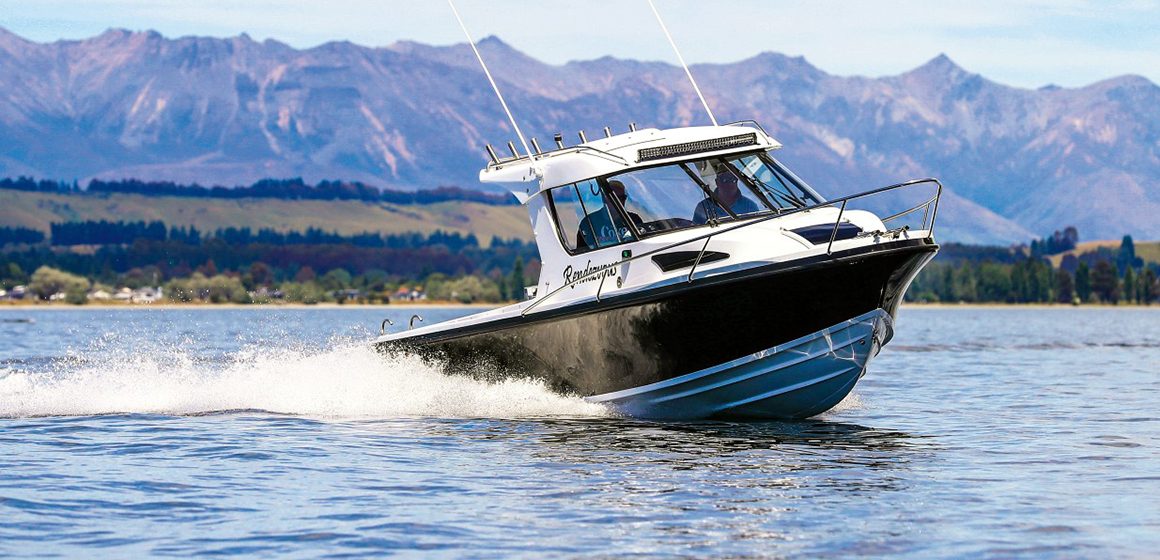

It all began as a very leisurely do-up project in 2016 but the arrival of lockdown in 2020 brought the time and motivation to finish it. The refurbishment of this 40-year-old 7m Fi Glass Baron has been a hugely rewarding journey for her owner – and he’s justifiably stoked with the result. Story by Lawrence Schaffler.
Rendezvous – as she is now called – started her new life like many other do-up projects: an impulsive Trade Me buy. Owner Derek Ayson lives on a lifestyle block near Gore and bought the boat (then named Impala) even though he’d never tried anything like this before. But he was reasonably confident in his DIY skills.
Besides, there was some method in his madness. The family already owned an elderly Fi Glass Viscount his dad had purchased new from Gore’s Beck Motors back in 1976. “I knew the brand well and enjoyed the soft-riding hulls – so it wasn’t as though the Baron was a wild, unknown entity.”
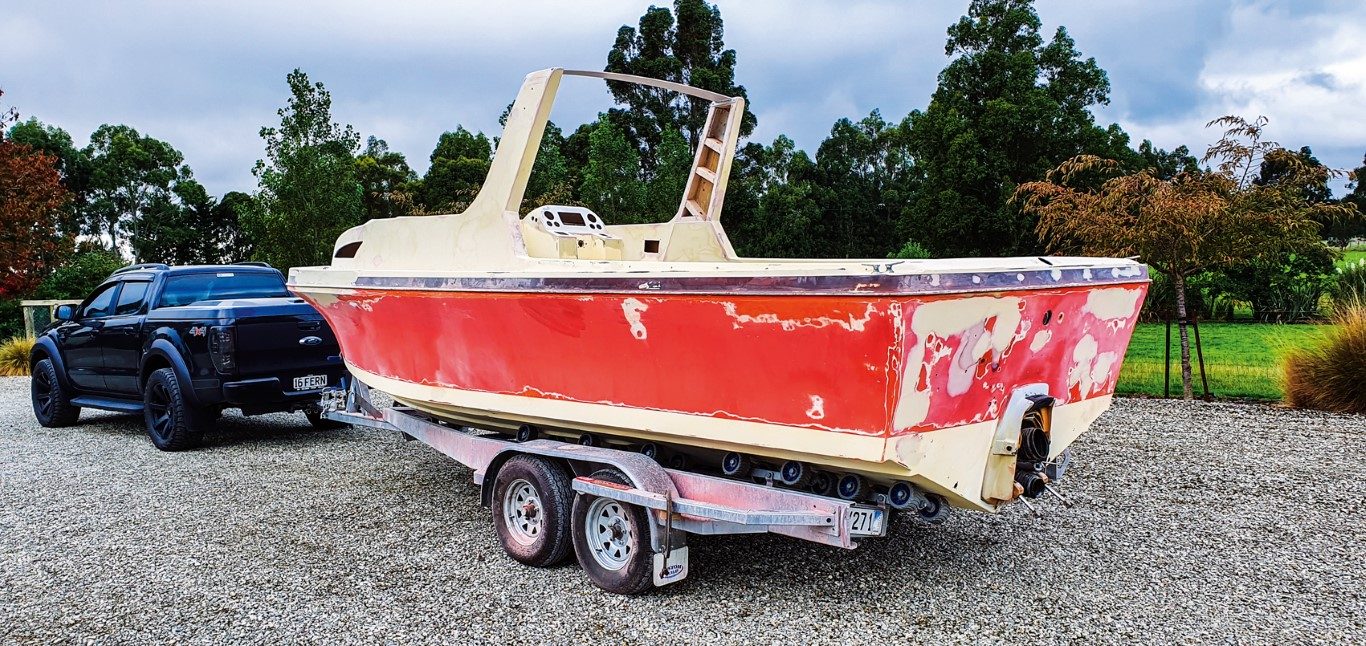
But like many budget-friendly Trade Me acquisitions, the 1982 Baron had her share of problems. Apart from her ‘blocky’ styling, jaded 80s-era colour scheme and out-dated equipment, her Chev 305 V8 engine was seized – a useless lump of metal. And her trailer was falling to pieces.
“As might be expected,” says Ayson, “the list of upgrades and alterations quickly expanded as the job progressed. I’m delighted with the result, but I’m not sure I’d tackle something like it again!”
The job began with one of the most daunting challenges – altering the boat’s deck and hardtop. “My main goal was to modernise the boat and transform a 40-year-old design – to make it look as though it had just emerged from the Christchurch factory.
“To do that I decided to increase the headroom in the cockpit area – the original hardtop was very low – I kept bumping my head on the roof’s turned down, trailing edge. And I wanted to streamline her lines – change the deck profile and install nicer cabin windows.”
After plenty of doodling, sketching and measuring he fabricated the modifications to the hard top and cabin deck from timber and plywood – all glued and screwed (with stainless steel screws) – and fibreglassed.
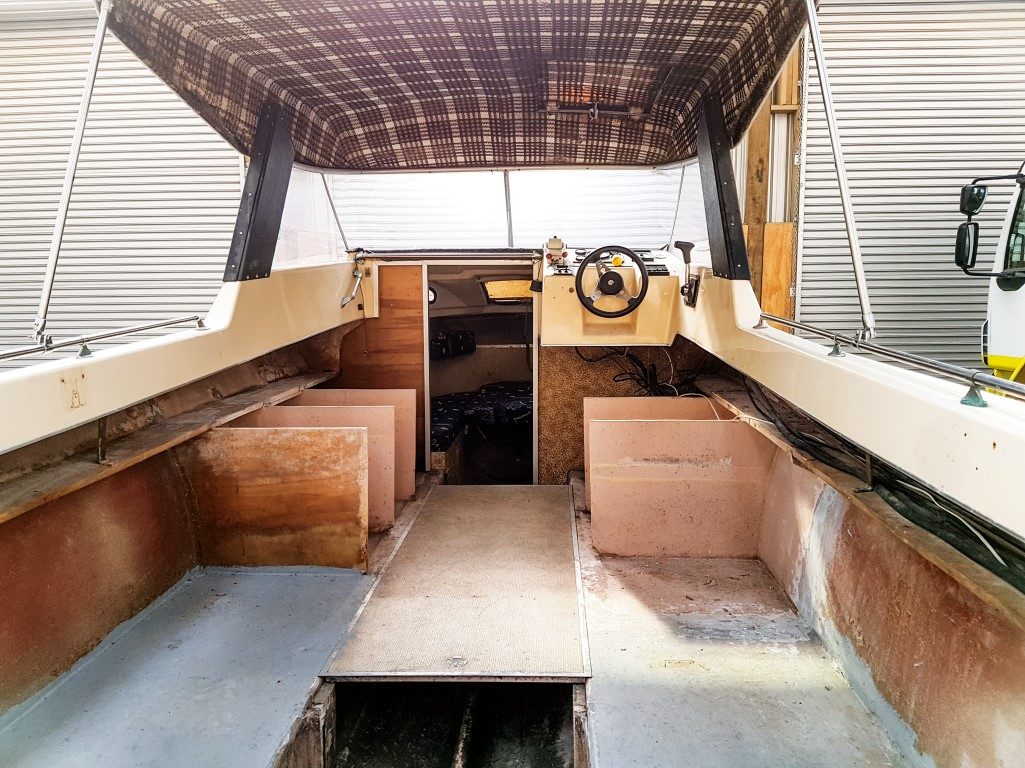
Many (many, many ) hours of sanding and body filler delivered a smooth, professional finish. He confesses to modelling the new sides of the hardtop around those he’d seen on Extreme Boats’ vessels, as he really like their styling.
Strengthening and modifying the rear section of the hardtop brought additional advantages: it eliminated the need for bracing poles (used in the original hardtop), and the changes now allow unobstructed fishing and access to the entire rear area of the boat. The original hardtop’s sliding sunroof has been retained.
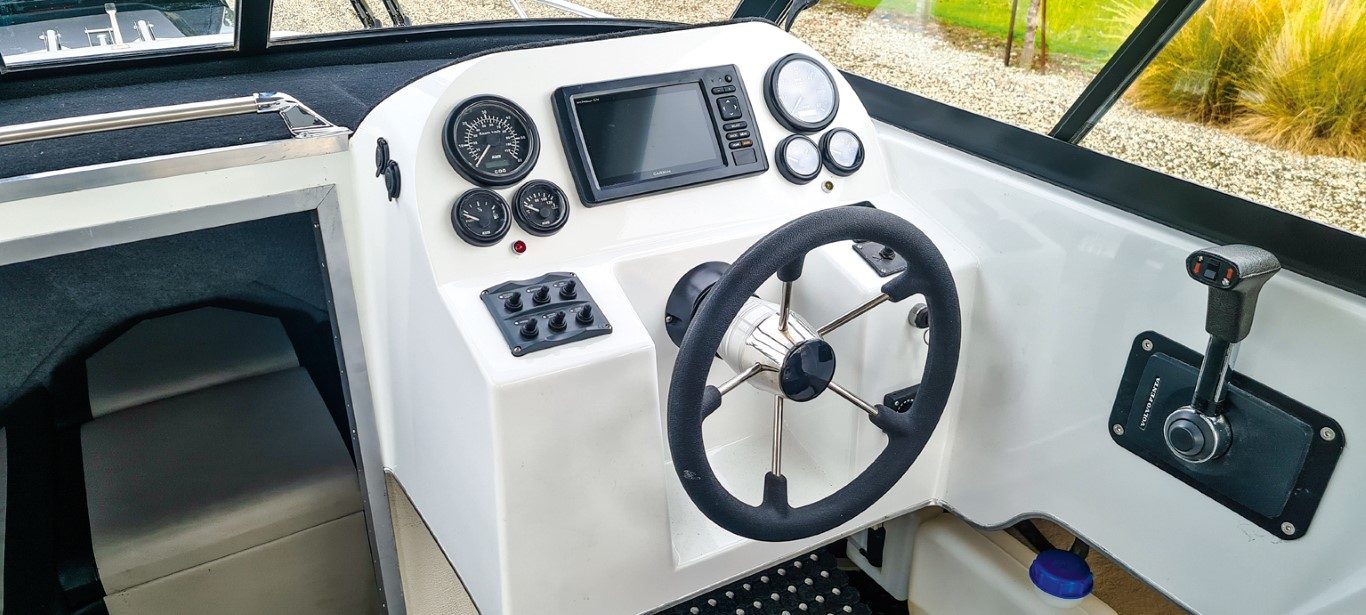
Increasing the headroom in the cabin by 150mm also allowed him to get creative with the windscreen. “I spent quite a bit of time searching through windscreen profiles on the internet and settled on a design from Sea Thru windscreens in Christchurch.
“It was too wide to fit the Baron hull but, being a three-piece glass unit with a flat middle section, it was easy to modify. Brian Casey (at Sea Thru) was extremely helpful with advice and suggestions to make it work. I also added a set of windscreen washers and wipers, as well as a curved LED light to the front of the hardtop.”
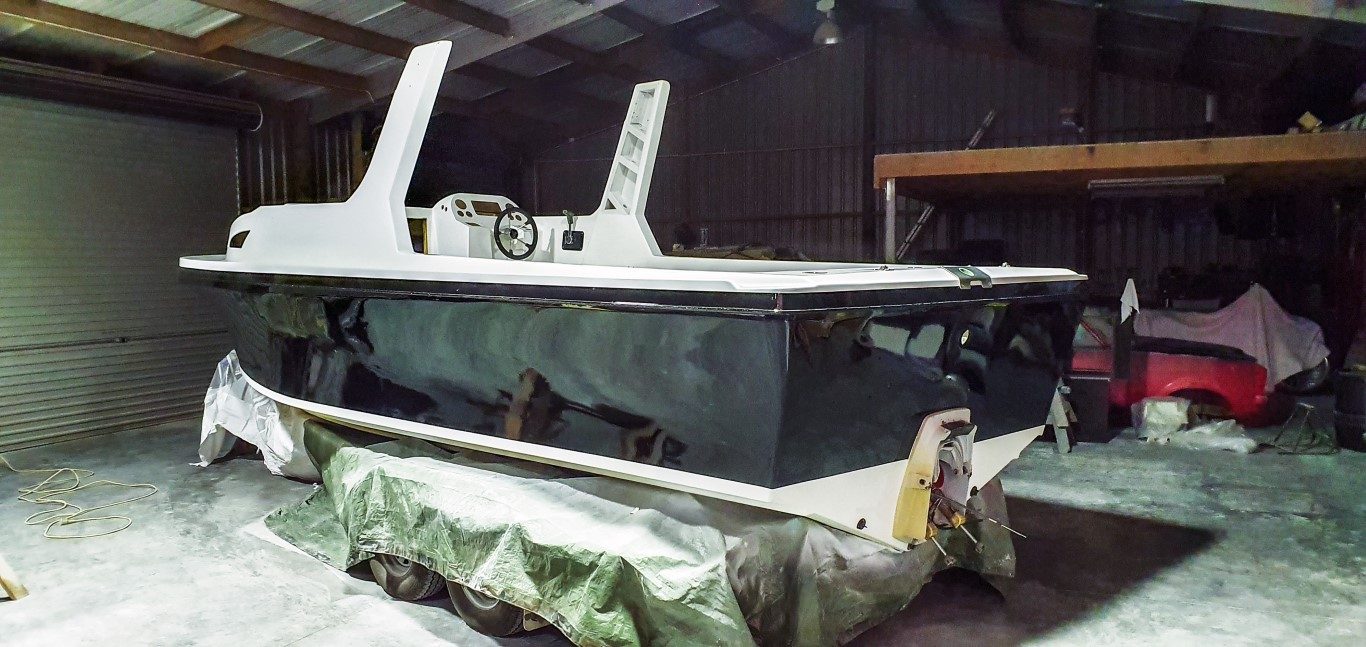
With the hull and superstructure modifications completed, Ayson’s thoughts turned to paint. “Our Viscount is blue and white and even though it’s from the 70s – still with its original flowery canopy! – I really like the combination. But I tweaked it a little and decided to go with black and white on the Baron, which I think has really modernised her looks. I passed on the flowery canopy…”
He deferred to his good friend Darryl Batt to apply the top-coat – and the results prove that Darryl’s a dab hand with a spray gun. The snappy, new cabin windows are tinted Perspex and have been urethaned into place.
Inside, the entire cabin and underside of the hardtop have been fitted with grey Frontrunner, with black Frontrunner above the dash to eliminate any reflections. Seat upholstery is by McDougall’s Saddlery in Gore, who applied the stitching finesse to replicate the two bucket seats sourced from Christchurch’s Burnsco.
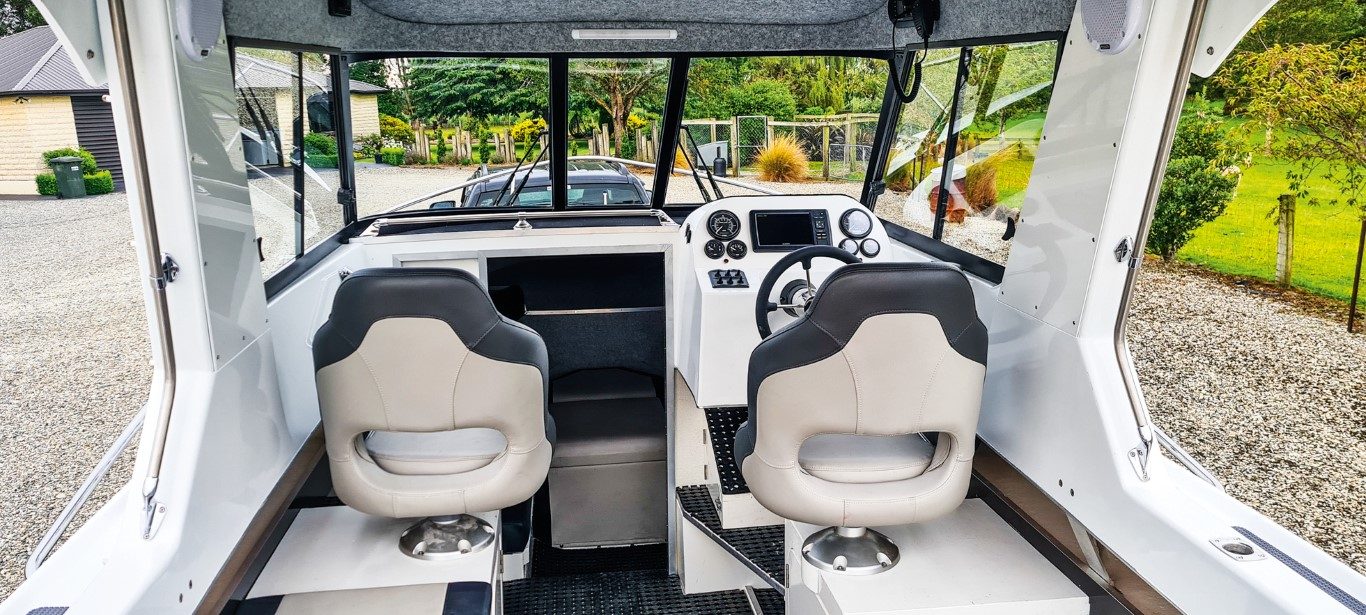
Engine
To keep things simple, Ayson swapped the seized 305 Chev for a 5.7-litre 350hp Chev (new block and heads, with the carburettor and other parts cannibalised from the original engine). Because both engines use similar blocks, the new 350 slotted onto the original engine mounts without fuss – no modifications required. But the engine box received a generous helping of sound insulation. The Volvo Penta Duo Prop sternleg (which came with the boat) was in good condition and only required a service.
The boat’s new electrical system and instruments required a total rewiring job – Ayson ran the cables but left the connections to Michael Kelly Auto Electrical in Gore. Given the frisky temperatures in some of his favourite boating spots, he also elected to fit a diesel heater – ducted to the windscreen and cockpit.
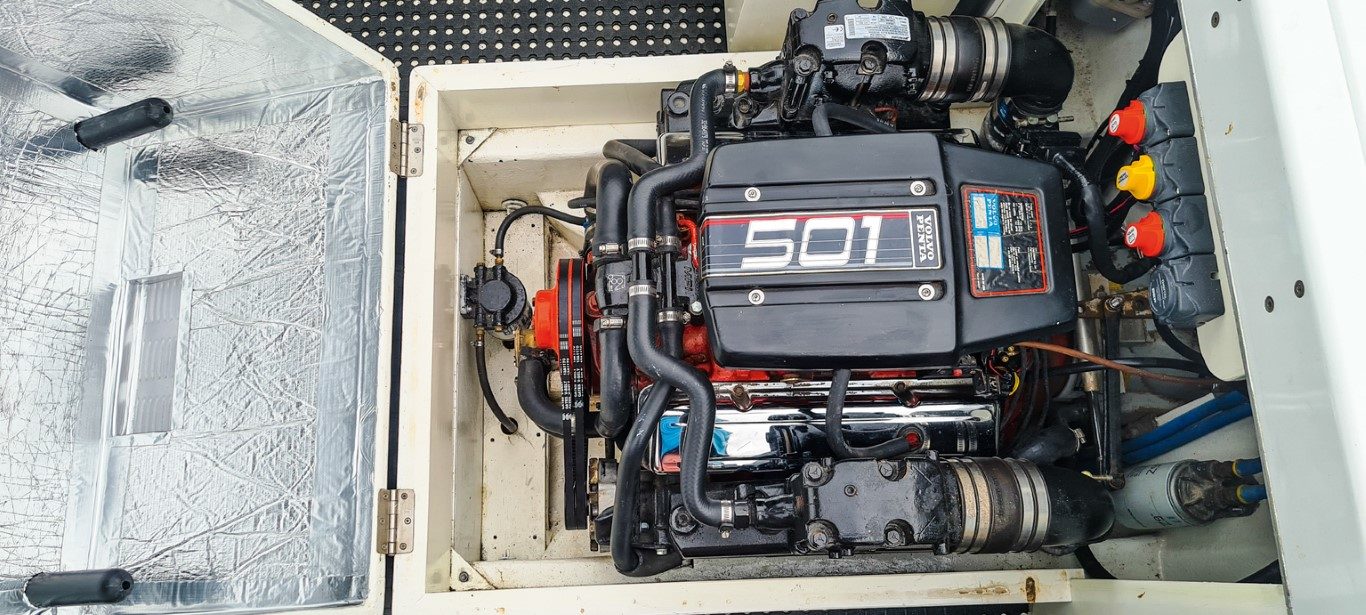
Getting the boat to the water would need a new trailer. Gore’s Custom Build Engineering fabricated the galvanised unit (modelled off the original) but complemented the standard keel rollers with multi rollers. Total weight on the trailer is now 2,850kg, an easy load for Ayson’s Ford Ranger.
Custom Build also made a new alloy dash (for the new gauges), as well as the rod holders and a modified fuel tank (boosting capacity from 208 to 365 litres). The boat’s bow rail is from a SS660 Haines Hunter – it was a spare unit lying at local dealer Inders Marineland, and it fits perfectly!
Naming Rights
Ayson didn’t like the boat’s original name and spent quite a bit of time thinking about an alternative. “Some people believe renaming a boat brings bad luck, but I’m not superstitious. I settled on Rendezvous as it means ‘meeting place’ – it’s appropriate as the boat is a place we meet with family and friends to enjoy fishing or water sports.”
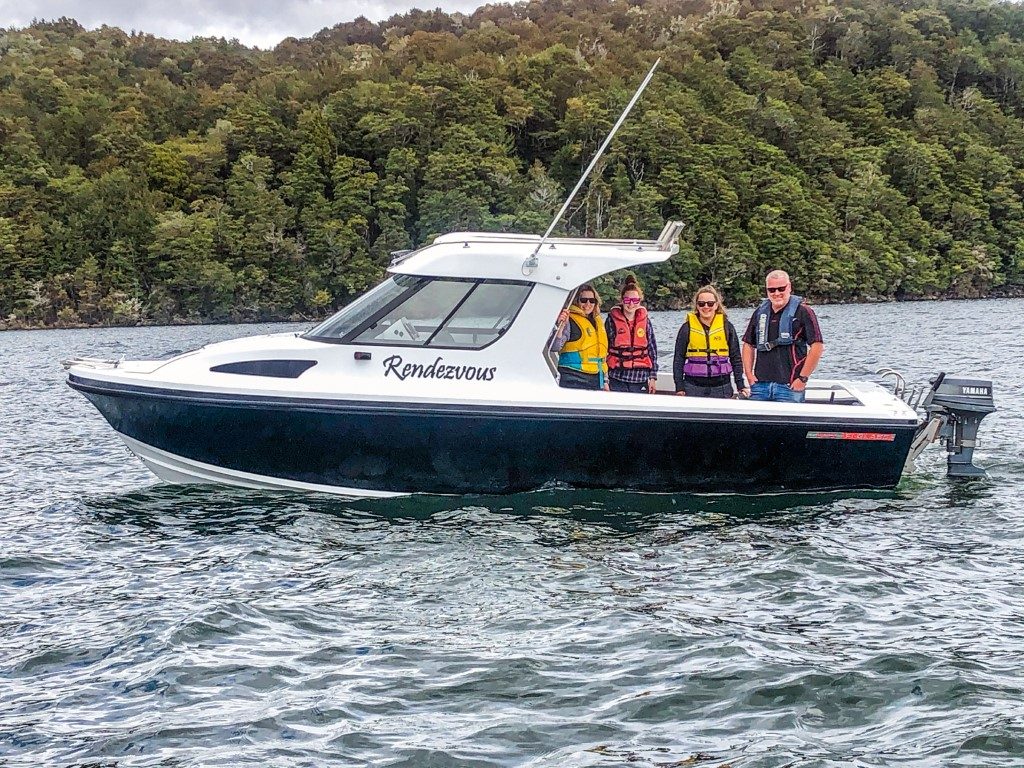
Following her re-launching just before Christmas last year, Ayson and his family have covered around 450km – mainly on lakes Te Anau and Manapouri. She’s also ventured out for a day of sea fishing from Milford Sound. “She performs brilliantly – never missed a beat. We encountered some very choppy conditions a couple of times and she handled them with ease. Top speed is 62kph [33.5 knots] at 4,200rpm, while cruising speed is 45kph [24.3 knots] at 3,200rpm – I’m very happy.

“This has been a huge project, far bigger than I originally imagined, but I’m absolutely stoked with how it has come up and thoroughly enjoy getting it out on the water at any available chance. I couldn’t have done it without the support and help from some special friends – in particular Paul Clarkson – he was always there when I needed help and a lift – thanks mate!”




